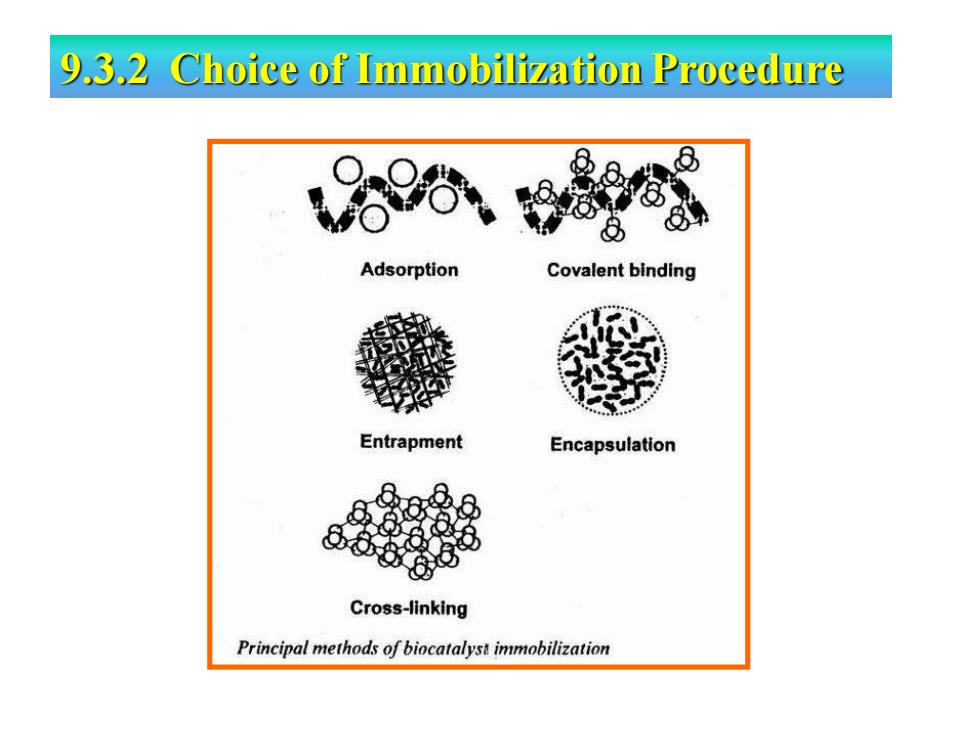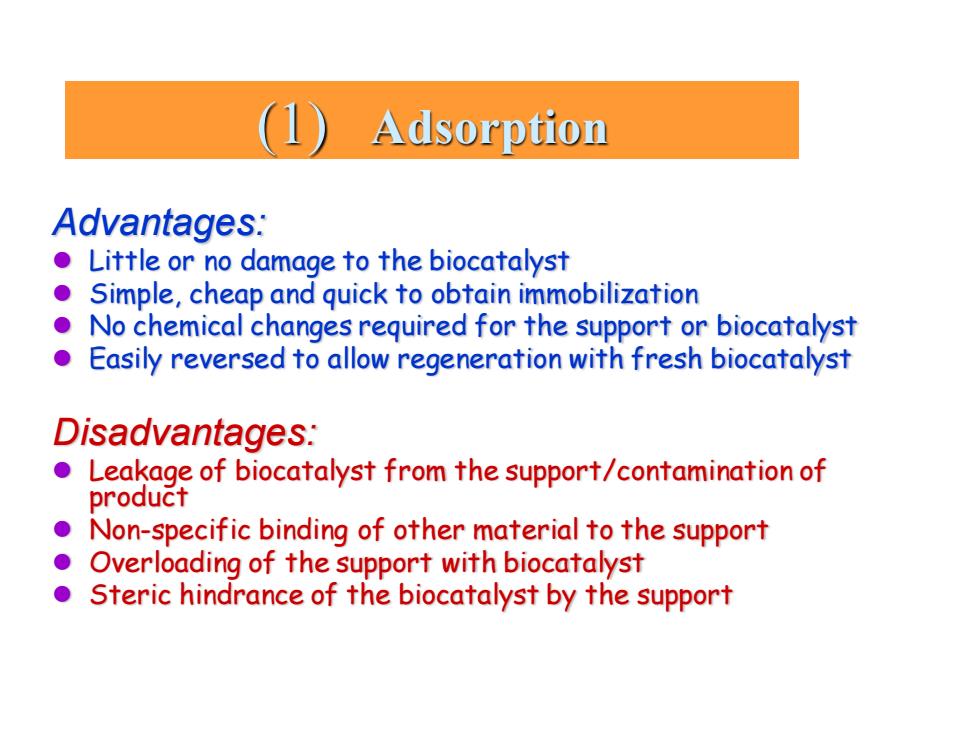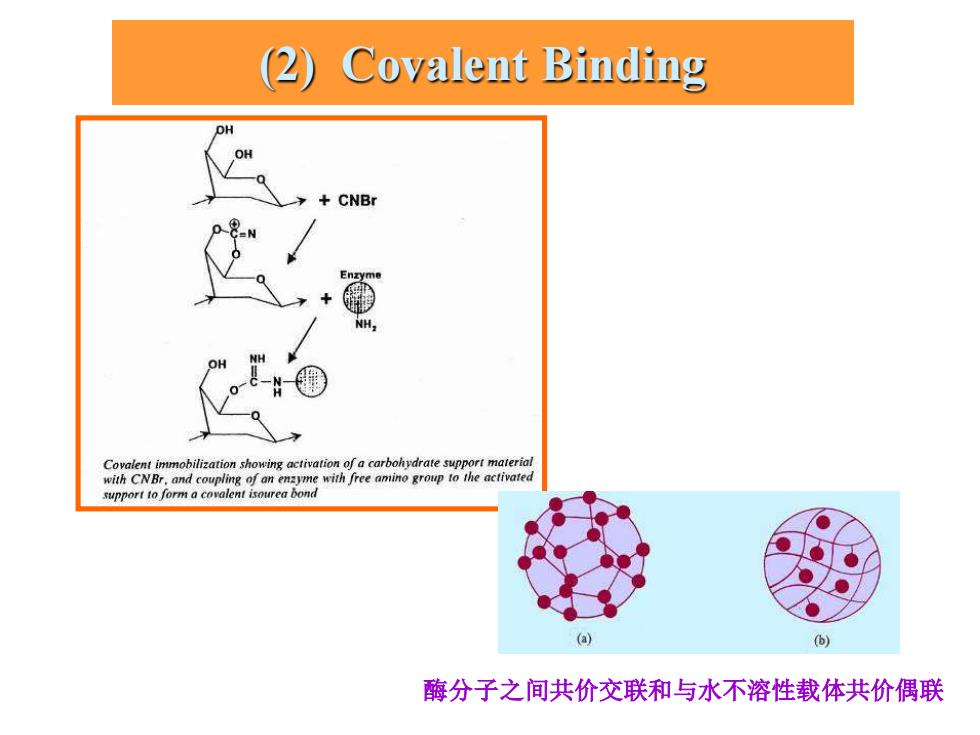
9.3 Immobilization 0 00 8 o80oo。o Homogeneous Heterogeneous soluble enzyme Immobillzed enzyme Two-phase system generated by immobilization Repeated use of biocatalyst in batch reactions Simple separation of biocatalyst from product after reaction Continuous use of biocatalyst in a continuous reactor system
⚫ Repeated use of biocatalyst in batch reactions ⚫ Simple separation of biocatalyst from product after reaction ⚫ Continuous use of biocatalyst in a continuous reactor system 9.3 Immobilization

9.3.1 Choice of Support material Inorganic Organic Biological Aluminium Oxide Polyethylene Cellulose Nickel oxide Polysty;rene Dextran Stainless steel Polyacrylate Agarose Porous glass Nylon Starch Porous silica Polyacrylamide Alginate Activated carbon Polymethacrylate Carrageenan Diatomaceous earth Polypyrrole Chitin Iron oxide Polyaniline Bone Titanium oxide Polyphenol Chitosan Pumice stone Polyester Collagen,gelatin Zirconium oxide Polyvinyl alcohol Liposome Vanadium oxide Cells (yeast,red blood)
Inorganic Organic Biological Aluminium Oxide Polyethylene Cellulose Nickel oxide Polysty;rene Dextran Stainless steel Polyacrylate Agarose Porous glass Nylon Starch Porous silica Polyacrylamide Alginate Activated carbon Polymethacrylate Carrageenan Diatomaceous earth Polypyrrole Chitin Iron oxide Polyaniline Bone Titanium oxide Polyphenol Chitosan Pumice stone Polyester Collagen, gelatin Zirconium oxide Polyvinyl alcohol Liposome Vanadium oxide - Cells (yeast, red blood) 9.3.1 Choice of Support material

9.3.2 Choice of Immobilization Procedure 6、 Adsorption Covalent binding Entrapment Encapsulation Cross-linking Principal methods of biocatalyst immobilization
9.3.2 Choice of Immobilization Procedure

Adsorption Advantages: Little or no damage to the biocatalyst Simple,cheap and quick to obtain immobilization No chemical changes required for the support or biocatalyst ● Easily reversed to allow regeneration with fresh biocatalyst Disadvantages: Leakage of biocatalyst from the support/contamination of product Non-specific binding of other material to the support ●( Overloading of the support with biocatalyst ● Steric hindrance of the biocatalyst by the support
Advantages: ⚫ Little or no damage to the biocatalyst ⚫ Simple, cheap and quick to obtain immobilization ⚫ No chemical changes required for the support or biocatalyst ⚫ Easily reversed to allow regeneration with fresh biocatalyst Disadvantages: ⚫ Leakage of biocatalyst from the support/contamination of product ⚫ Non-specific binding of other material to the support ⚫ Overloading of the support with biocatalyst ⚫ Steric hindrance of the biocatalyst by the support (1) Adsorption

(2)Covalent Binding OH CNBr Covalent immobilization showing activation of a carbohydrate support material with CNBr and coupling of n enyme with free min group to the activated support to form a covalent isourea bond (a) 6) 酶分子之间共价交联和与水不溶性载体共价偶联
(2) Covalent Binding 酶分子之间共价交联和与水不溶性载体共价偶联